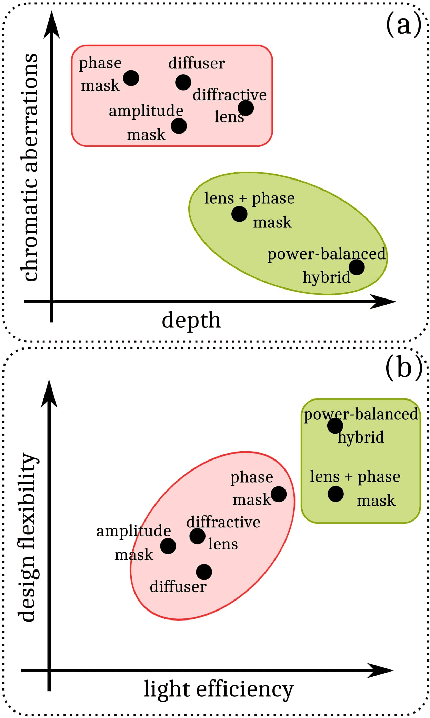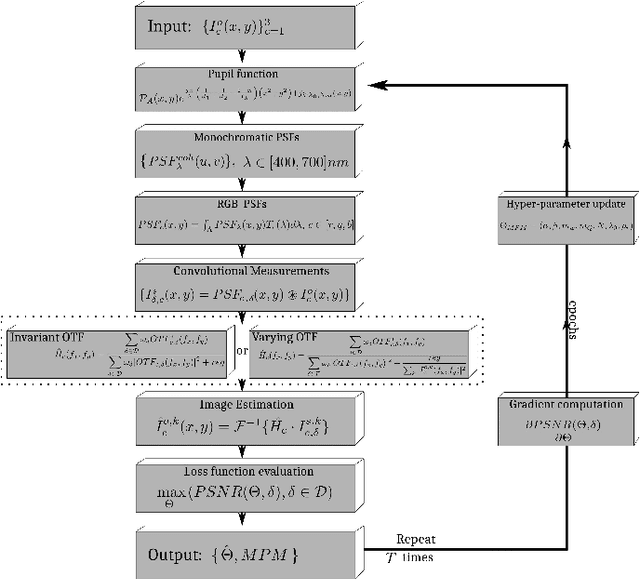Optimized Power-Balanced Hybrid Phase-Coded Optics and Inverse Imaging for Achromatic EDoF
Paper and Code
Mar 09, 2021



The power-balanced hybrid optical imaging system is a special design of a computational camera, introduced in this paper, with image formation by a refractive lens and Multilevel Phase Mask (MPM) as a diffractive optical element (DoE). This system provides a long focal depth and low chromatic aberrations thanks to MPM, and a high energy light concentration due to the refractive lens. This paper additionally introduces the concept of a optimal power balance between lens and MPM for achromatic extended-depth-of-field (EDoF) imaging. To optimize this power-balance as well as to optimize MPM using Neural Network techniques, we build a fully-differentiable image formation model for joint optimization of optical and imaging parameters for the designed computational camera. Additionally, we determine a Wiener-like inverse imaging optimal optical transfer function (OTF) to reconstruct a sharp image from the defocused observation. We numerically and experimentally compare the designed system with its counterparts, lensless and just-lens optical systems, for the visible wavelength interval (400-700) nm and the EDoF range (0.5-1000) m. The attained results demonstrate that the proposed system equipped with the optimal OTF overcomes its lensless and just-lens counterparts (even when they are used with optimized OTFs) in terms of reconstruction quality for off-focus distances.
 Add to Chrome
Add to Chrome Add to Firefox
Add to Firefox Add to Edge
Add to Edge